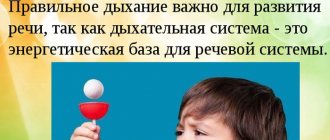4.7
Average rating: 4.7
Total ratings received: 374.
4.7
Average rating: 4.7
Total ratings received: 374.
In our speech and especially in fiction, means of verbal expressiveness are widely used to more accurately convey the thoughts and feelings of the author. They can be divided into phonetic, syntactic and lexical. Our article is devoted to the latter.
The material was prepared jointly with a teacher of the highest category, Kuchmina Nadezhda Vladimirovna.
Experience as a teacher of Russian language and literature - 27 years.
Paths in Russian
Metaphor
Metaphor is the use of a word in a figurative meaning based on the principle of similarity; it is called hidden comparison. For example, in Marina Tsvetaeva’s poem we read “And the green of my eyes, and a gentle voice, and the gold of my hair.” Here the word “gold” is used figuratively based on the principle of similarity in color.
In literature one can find extended metaphors, when the same image is revealed over several phrases or even an entire work; An example is the poem by S. Yesenin “The golden grove dissuaded...”, built on several extended metaphors.
Metonymy
Transferring meaning based on the principle of contiguity. For example, in the everyday expression “the kettle has boiled” a metonymy is used: the kettle is not boiling, the water in the kettle is boiling.
Synecdoche
It is close to the previous means, sometimes it is even considered a special case of metonymy. This is the use of a part instead of a whole or vice versa. We find an example of the use of synecdoche in A.S. Pushkin’s poem “The Bronze Horseman”: “All the flags will come to visit us.” The poet used the word "flags" instead of the word "countries".
Epithet
This is a bright, colorful, figurative definition that characterizes a concept or phenomenon. Epithets are very common in poetic speech. For example, in S. Yesenin we read: “I would like to get lost in the greenery of your hundred-ringed ones” (the epithet is the word “hundred-belled”).
Oral folk art is characterized by so-called “constant” epithets: “good fellow”, “red maiden”, “clear moon”, etc.
Comparison
A visual medium based on comparison of one object or phenomenon with another.
Comparison can be made using a comparative phrase or a comparative clause.
Comparisons can also be made using the instrumental case. For example, “he fell to the ground like a stone” = like a stone.
In A. Akhmatova’s poem “Requiem” we read: “They took you away at dawn, she followed you, as if on a takeaway...” Here the comparison is framed in a comparative phrase.
Occasionalisms
These are words coined by the authors themselves. V. Mayakovsky and other futurists have a lot of original neologisms, but they were not the only ones who used occasionalisms.
Some words invented by writers have now entered our language and become commonly used, for example, the word “pilot”, created by V. Khlebnikov.
Periphrase
This is a descriptive statement used instead of directly naming an object or phenomenon. For example, from A.S. Pushkin: “I love you, Peter’s creation!” The paraphrase “Petra creation” means St. Petersburg.
The real genius of periphrasis was M. A. Bulgakov. For example, in the novel “The Master and Margarita” we read: “... the one whom, quite recently, poor Ivan convinced at the Patriarch’s that the devil does not exist. This non-existent one was sitting on the bed.” All this means Woland.
The purposes of using paraphrase are different:
- etiquette (instead of curse words or words that for some reason are considered indecent, for example relating to physiological functions);
- religious or dictated by superstition (“evil” instead of “demon”, “deceased” instead of “dead”; this also includes the names of animals associated with ancient beliefs: bear, etc.);
- strictly literary : for beauty or to avoid unjustified tautology.
Syntactic means of expression
These devices are called stylistic or rhetorical figures. They are designed to make the presentation more vivid, rich and give it imagery. Thanks to special designs, the narrative acquires the desired emotional coloring. This makes it easier for a writer or poet to convey a creative idea to the reader.
Ancient orators perceived figures as decoration, unusual for everyday speech. Modern philologists are inclined to believe that stylistic devices are part of language; without them it is impossible to imagine even everyday communication, and not just literary works.
Theoretically, figures and tropes in the Russian language are different categories, but it is not always possible to distinguish between them. It happens that, based on some characteristics, a remedy can be classified into both categories.
Simplified, it can be divided as follows: trope is one word, figure is a phrase, but there are many exceptions.
Since there are several schools of grammar, the ways of classifying figures also differ. You can take as a basis the one you like best - this will not be a violation of language norms.
The classic method of grouping involves dividing into the following groups:
- figures of words;
- figures of thought.
Funds are divided within each group.
Word figures
The difference between this syntactic device is the invariance of the structure.
The phrase is used in one form.
If you change, remove or add any word, the contextual meaning will be distorted or lost.
List of frequently used figures:
- Addition. Repeating one word several times for emphasis. Parts of speech are selected carefully, otherwise it will not be possible to achieve the desired effect. Application option: “Higher, and higher, and higher.”
- Pleonasm. The use of a number of synonyms - lexemes that are close or identical in meaning. Example: “He kisses and kisses him.”
- Ellipsis. Omitting unimportant tokens. When speaking of “champagne,” it is customary to dispense with the word “wine,” and when thinking about Olivier, it never occurs to anyone to clarify that we are talking about salad.
- Allegory. They are used when it is necessary to convey the meaning allegorically, for example, to point out vices without denoting them. Thus, a donkey is called a fool, a fox is a cunning person, and a wolf is a greedy person. The master of metaphorical turns was I. A. Krylov.
- Prolepsis. The visual medium is implemented in two ways. 1 - the upcoming event is told as if it had already happened. 2 - both the object and the pronoun referring to it are called, for example: “Petrov is a famous quitter.”
- Decrease. Deliberate omission of one of the members of a sentence. Examples: “Party decisions - put into practice!”, “Five-Year Plan - in 4 years!” There is a dash in place of missing words. During Soviet times, diminution was used when composing slogans. Now this figure is in demand when it is necessary to artistically emphasize solemnity.
Complex rhetorical devices
To apply some shapes, you need to be a real master of the pen. Many Russian writers and journalists have mastered such constructions to perfection, so their works evoke the whole gamut of emotions. Complex stylistic devices:
- Rearrangement. Violation of the accepted sequence of lexemes, inversion. The goal is to give the desired color. In the usual sequence, the statement can be neutral. It, if inversion is applied, becomes solemn, mocking or sarcastic. Example: “We will soon receive an answer” - “We will receive an answer soon” - “We will receive an answer soon.”
- Gradation. Enhancing expressiveness by using multiple words in sequence with increasing meaning. Options: “I’ll find, catch up, finish off, torture!”, “Ready to tear to pieces, crush, destroy.” The gradation can be ascending or descending. This is the case when a linguistic device can be represented by a word figure and a speech pattern. The second is used in "The Tale of the Fisherman and the Fish." The old woman went from a poor peasant woman to a free queen - this is an ascending, expanded gradation.
- Polysyndeton. The same conjunctions are used, usually consisting of one letter, for example, “and rain, and snow, and wind.” The medium helps the author to enhance the meaning.
- Aposiopesis. Intentional omission to create intrigue when there is a hidden meaning, but pointing it out directly is undesirable. Often indicated by ellipses, in place of which the reader can substitute a word or conclusion. “If we don’t start doing better, then...”
- Alliteration. Represents the deliberate frequent use of identical consonant letters. Mayakovsky often used this technique, for example: “Beat, drum!” Drum, drum!” (political verse).
Rare designs
The difference between these techniques is that with their help it is best possible to make a statement pathetic, solemn, or emphasize officialdom.
Sometimes used to color a statement with a mocking tone.
Stylistic means:
- Rest assured. A construction in which several heterogeneous additions refer to one control member of the sentence: “He loved cats and a hearty meal.”
- Kyklos. A ring structure in which 2 identical words are repeated. Options: “Comrades, let’s go out, don’t stop, comrades!”, “A rally that did not lead to results is not a rally.”
- Homeotelevton. A figure based on sound repetition and rhythm. Often used for advertising purposes. “Your pussy would buy...” - seeing or hearing this phrase, a person will remember the name of a popular cat food. Rhyme has become a common device used in everyday discourse.
- Chiasmus. An expression that can be conditionally divided into left and right parts, and they are symmetrical relative to each other. A chiasmus can be simple, syntactically complex, or a chiastic pun. In the latter case, the meaning of the words changes. “Live to eat, not eat to live.” “We forget what we want to remember, and we remember what we want to forget.” “Below is the power of darkness, and above is the darkness of power.”
- Isocolon. Represents full parallelism. In two or more phrases, only one word is changed, and the rest are repeated in the same order. Another option is to change the words, but maintain the order of the parts of speech. Examples: “I walk through meadows, I walk through forests,” “I swaddled myself in thin diapers, and put on warm boots.”
- Parentesa. A stylistic device based on the use of introductory elements. Examples: “This girl (we met her by chance at the exhibition) turned out to be an interesting conversationalist,” “You must be tired.”
- Litota (understatement). The technique is used by poets, writers, as well as journalists and diplomats when they need to say something in a roundabout way. Methods of implementation can be different - from diminutive forms of adjectives to the creation of complex constructions. Examples: “The rebels are trying to show that they are not very happy with the new laws,” “The mayor bought a small castle.”
Speech patterns
Speech patterns, or figures of thought, form a separate group of syntactic means of artistic expression.
They are divided into positive, used to achieve the desired effect, and negative, which make speech dissonant, illogical, or endow it with other shortcomings.
Types of syntactic means:
- a rhetorical question;
- exclamation;
- appeal;
- oxymoron.
An example of a rhetorical question: “Petya, why did you break the vase?” Exclamation: “What a wonderful summer!” Appeal: “Oh, Motherland, Oh, My Rus'!”
Examples of using an oxymoron: a living corpse, hot snow, sad joy, sweet bitterness, a bad good person.
It is necessary to distinguish between an oxymoron and stylistic constructions that emphasize properties that are uncharacteristic of the object.
For example: sweet torment (for some they may be like that), bitter honey (when the product has a bitter taste). According to some classifications, silence (aposiopesis) is also classified as figures of thought.
Comparison
The use of comparison gives the author the opportunity to describe a certain phenomenon by comparing it with another phenomenon that has similar characteristics. The comparison can be expressed in the following ways:
- Unions (as if, as if, etc.)
- Instrumental case
- Using the words similar, similar
- Denial
- Comparative degree of an adjective or adverb
When analyzing a literary work, for clarity, you can fill out a table, writing out what is being compared with what.
Some nuances
Without fully understanding the purpose for which one or another construction can be used, it is better to avoid repetitions, on which most figurative means are based. It is also important to consider that the impression largely depends on the role of the part of speech, which can be main or auxiliary. The phonetic environment also matters.
In addition to syntactic and lexical means, there are morphological ones . This is a series of techniques based on the frequent use of verbs, adjectives, nouns or other parts of speech. Tasks can be different: convey dynamism, emphasize the sounds of nature, make the description more rich, focus the reader’s attention on anxiety, calm, serenity, and so on. The ability to understand the means of artistic expression and use them for their intended purpose will help make oral and written speech rich, vibrant and meaningful.
Introduction
Relevance of the work:
Any person in the modern world has to speak in front of an audience. Oratory skills allow you to give more than just official speeches. Even if a person does not have to constantly speak in public, public speaking will allow him not only to increase his self-confidence, but also to communicate more confidently and persuasively with individuals. Skills such as quick thinking and resourceful word choice acquired through speaking are not limited to formal meetings but can be used everywhere.
The purpose of this work
is to study the features of rhetorical techniques and figurative and expressive means and their use by the orator Lysias.
Tasks:
- Will study the concepts of “rhetorical devices” and “visual and expressive means”.
- Consider a brief biography of the speaker Lysias.
- Consider the features of the use of rhetorical techniques and figurative and expressive means of the speaker Lysias.
An object:
features of rhetorical techniques and visual and expressive means of Lysias.
Item:
features of the use of rhetorical techniques and figurative and expressive means of the speaker Lysias in public speeches.
Test on the topic
- /5
Question 1 of 5How is the word “epithet” translated from Greek?
Start test
Hall of Fame
To get here, take the test.
- Dima Novikov
5/5
- Masha Prokhorova
5/5
- Badaykina Irisha
5/5
- Victor Kaplin
5/5
- Rafik Lalayan
5/5
Phonetic means: sound recording
Alliteration - Completehsometimes in the swamp depthswAnd/ Hwow wordswbut, damnwsmart wurshat kamawand - a combination of hissing consonants helps to convey the rustling of the reeds. The repetition of consonants creates an image.Assonance - LYublYu birch treesat Ratsskwow It's brightwow, then gratstnwow – conveys slight sadness and tenderness. Repetition of vowels, creating an image.Gradation - I came, I saw, I conquered! The arrangement of words and expressions is in ascending order (inSolve task 26 of the Unified State Exam in the Russian language with answers.







